Product Managing a Team of AI Agents: A 4-Week MVP Sprint
Summary: As the sole product owner for Heart of the Cosmos, I led the end-to-end development of a digital tabletop RPG during a 4-week sprint. I took my team from zero to one—but here’s the catch: my “team” was made up entirely of AI agents and LLMs.
During this time, I orchestrated a cast of AI tools, assigning them roles traditionally filled by researchers, designers, developers, and QA. This experiment wasn’t just about building a game, it was about building a product with modern tools and through a modern mindset.
MVP Delivered: Live demo
This is a working proof of concept under development, expect to see missing images.
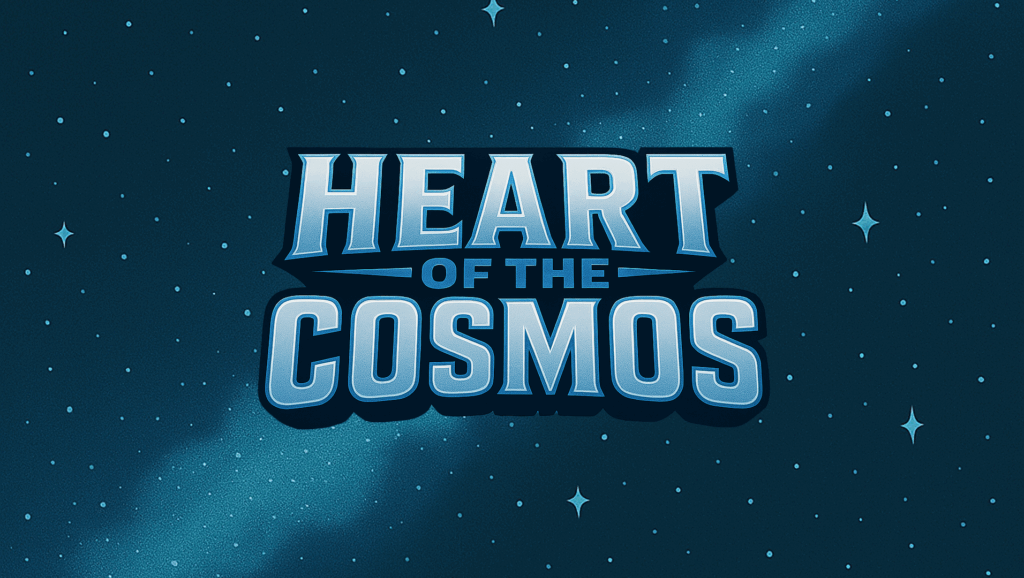
Meet My AI Team
- Perplexity as a Product Manager (PM) partner – breaking down scope, writing logic, discovery and research strategy
- Gemini as Technical Product Manager (TPM) – translating goals into technical requirements
- ChatGPT and Copilot as Design partners – brainstorming UI/UX, producing content that resonated with users
- DeepSeek and Cline as QA sounding boards – evaluating flows and testing conditions
Problem & Opportunity
The tabletop role-playing game (TTRPG) space is rich with narrative depth but often inaccessible to casual or time-constrained players. I identified an opportunity: create a short-session, digital-first, cooperative RPG that could be played from mobile browsers—no setup, no GM required.
Goal: Deliver an MVP that proves the core experience is desirable, viable, and feasible in a compressed development cycle.
Market & User Research
I intentionally stayed in a divergent mindset during the first week to explore possibilities and gather inspiration.
Objective: Validate demand, define core user personas, and identify unmet needs in the TTRPG/digital game space.
Approach: Used Perplexity AI to scan forums, trends, and reviews on existing tools like Roll20, One More Multiverse, and various mobile RPGs. I engaged Perplexity to help me pressure-test the idea and surface related topics for deeper exploration.
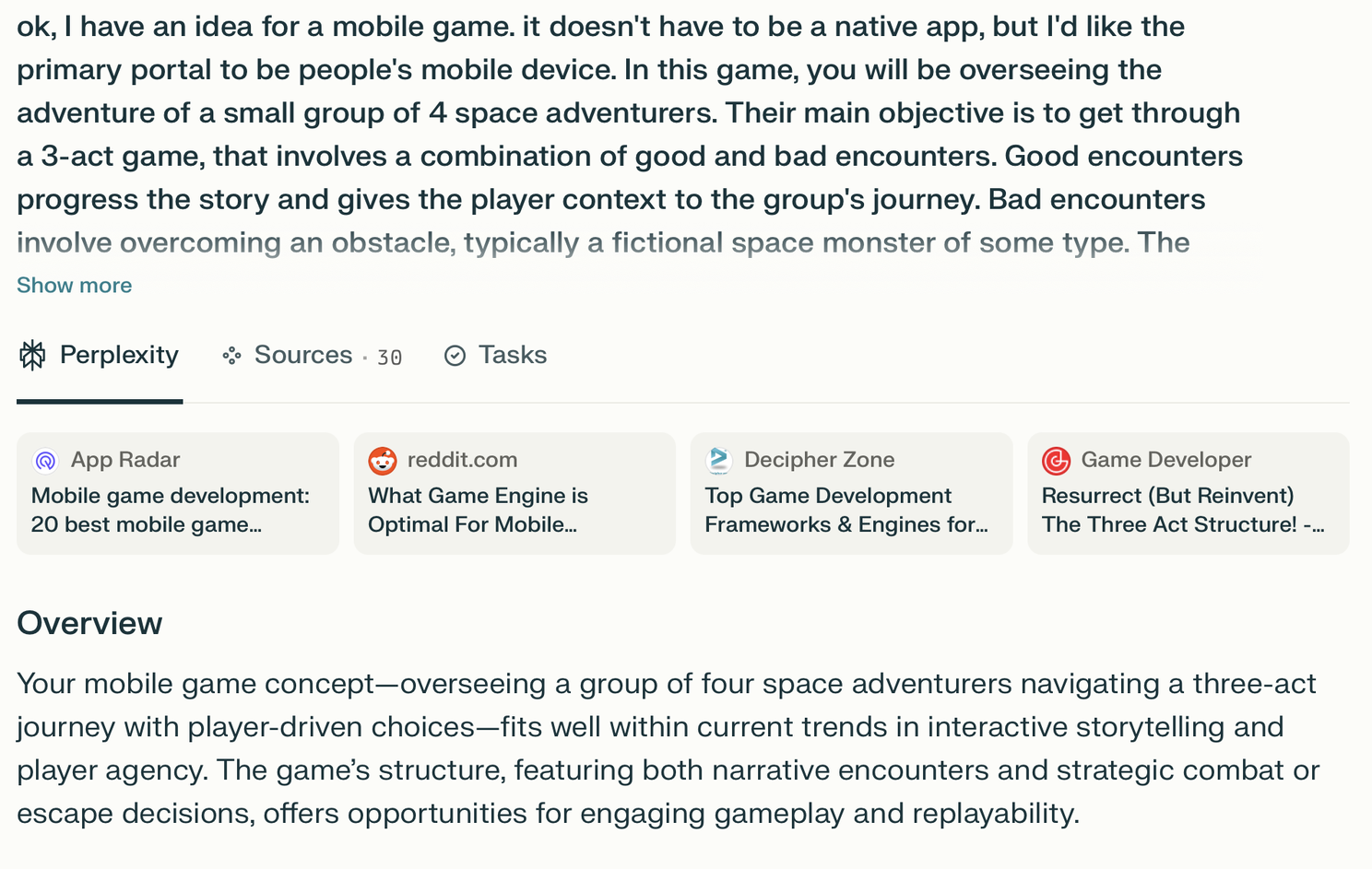
I found pain points around:
- Long play sessions
- Steep learning curves
- Lack of emotional engagement in short games
Outcome:
Identified a target persona: “Quick-Session Tactician” — a player seeking tight, high-stakes gameplay that balances narrative depth with tactical decision-making.
And validated a gap in short, emotionally resonant digital RPGs that focus on collaborative decision-making and shared consequences.
Product Requirements & MVP Scoping
Based on research insights and feasibility constraints, such as time and tech stack, I defined a lean MVP:
Must-Have Features:
- Playable characters with distinct personalities
- Rich and entertaining story structure with escalating tension
- Unique encounters with branching decisions
- Core mechanics: collecting treasure, team morale, and ship integrity
Nice-to-Have (deferred):
- Player progression tracking
- Special conditions
- In-game inventory
Tools used:
- Perplexity to produce initial PRD that included specifications and priorities
- Gemini to help define user stories, acceptance criteria, and logic trees
- ChatGPT to draft player archetypes, generate dialogue options, and simulate encounter branches
Here are some examples of the outputs from my AI team.
Product Requirement Documentation by Perplexity
Once I decided on the core concept, I used Perplexity to help draft a product requirements document (PRD), which I then used to guide and ‘train’ my other LLM collaborators. This PRD became the foundation for the entire project.
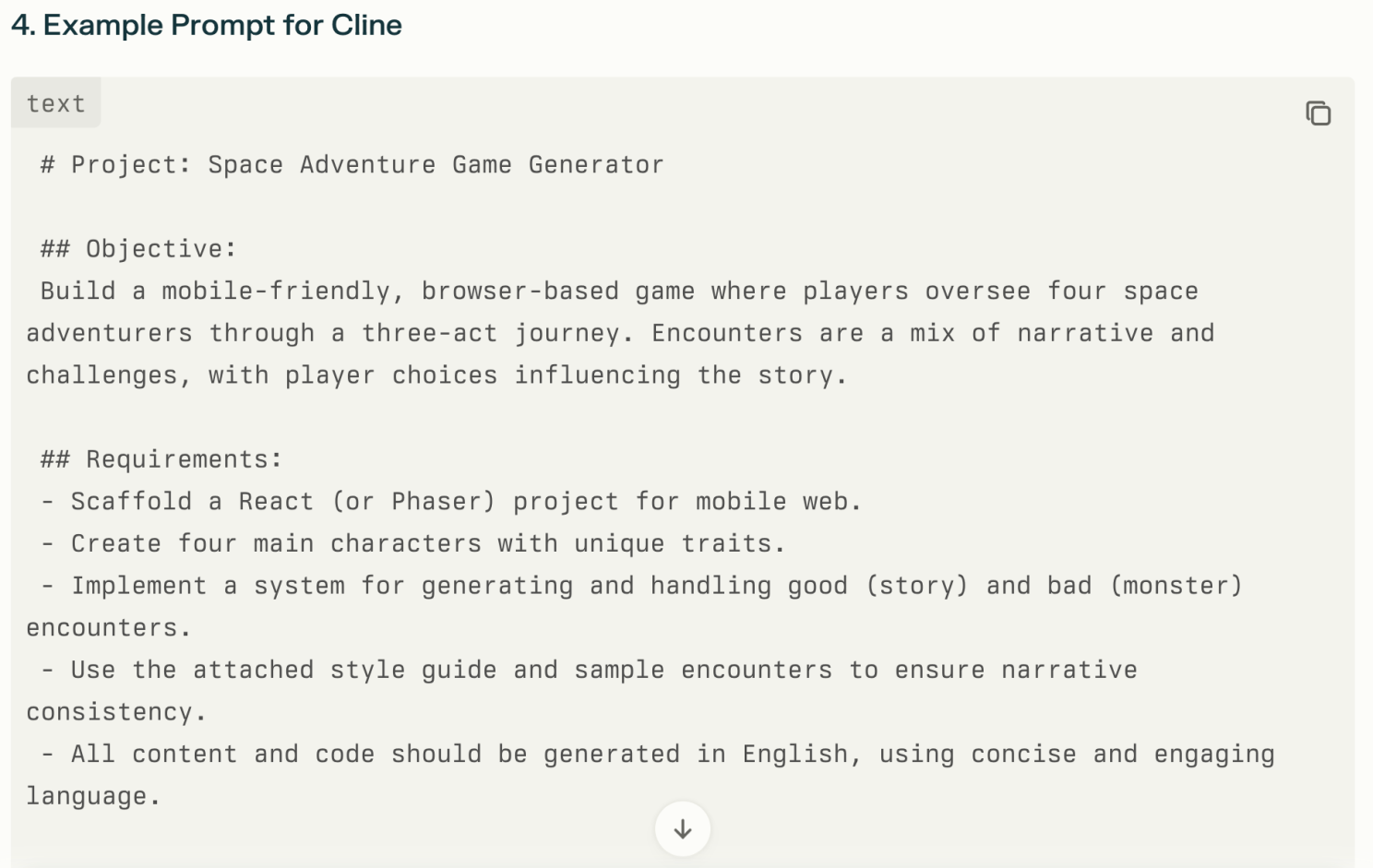
Project Setup Assistance From Gemini
I used the initial PRD generated with Perplexity to further develop the concept with Gemini, which helped me draft a refined version tailored for implementation. Gemini then guided me through the project setup—offering prompts and terminal commands I could use to instruct Cline within VSCode.
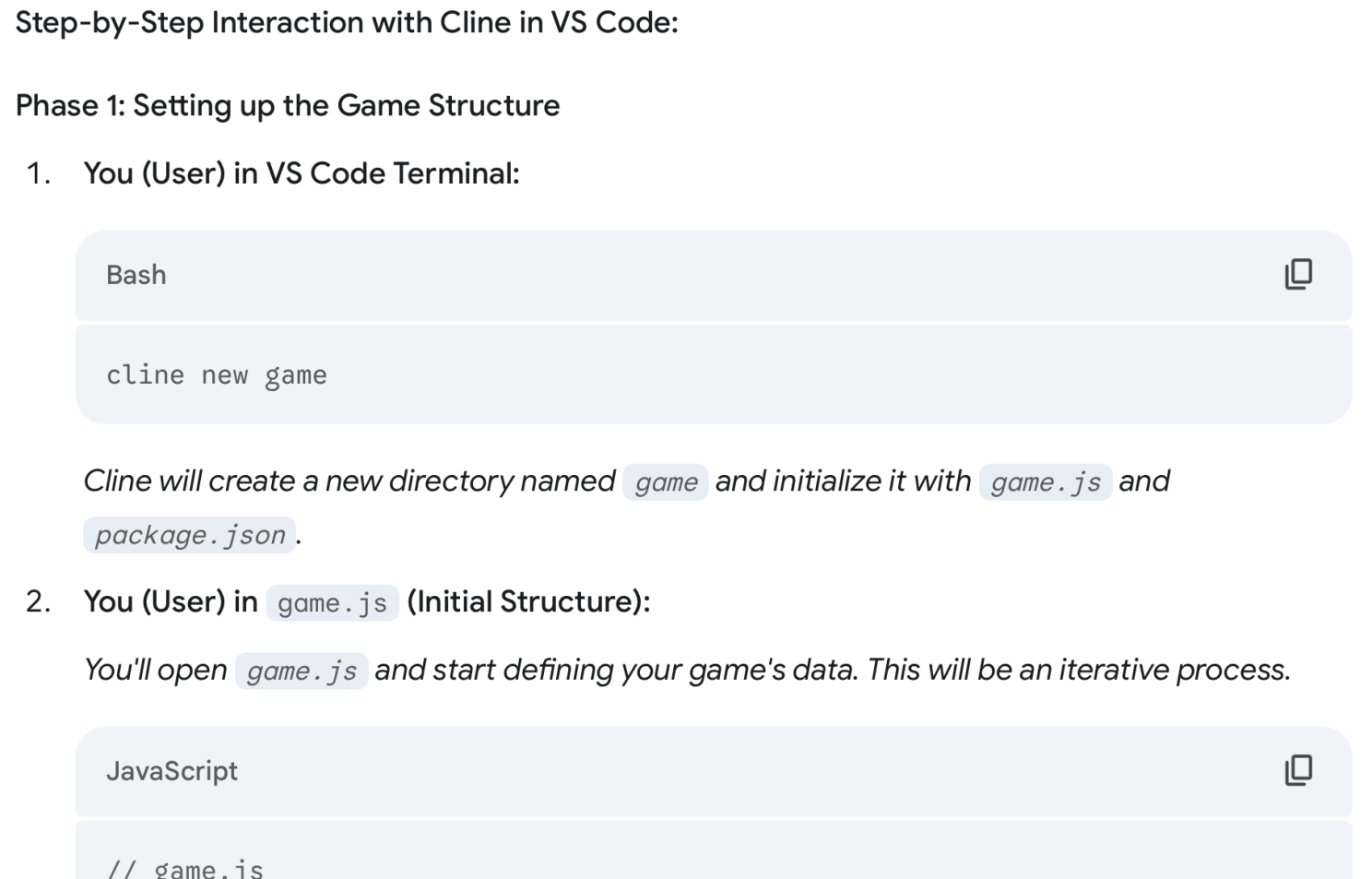
Defining Target Market and Generating Personas Using ChatGPT
Using the extensive research done with Perplexity, I further developed my understanding of a particular segment of TTRPG players.

ChatGPT produced some foundation for my characters that my players could resonate with.
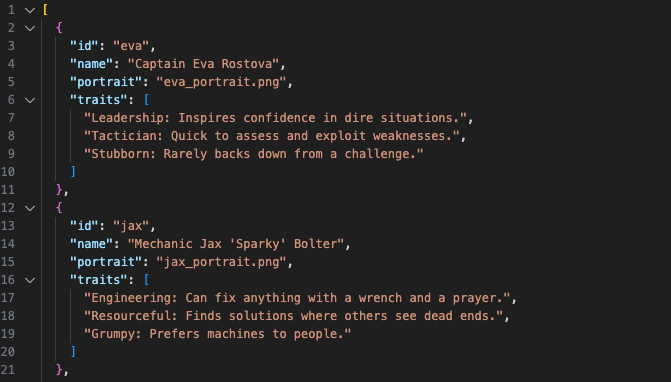
With the scope defined and the AI ‘team’ assembled, I moved into rapid prototyping to validate flow and interaction quality.
Prototyping & Development
I started the second week with some sketching and ideation.
- Built encounter flow in Figma
- Conducted lightweight playtesting with peers
- Iterated based on early feedback: rebalanced morale/ship mechanics to feel more consequential
Using wireframes built in Figma, I consulted Gemini by sharing this image. This helped clarify the game’s interaction flow and informed how Gemini structured the project’s file architecture.
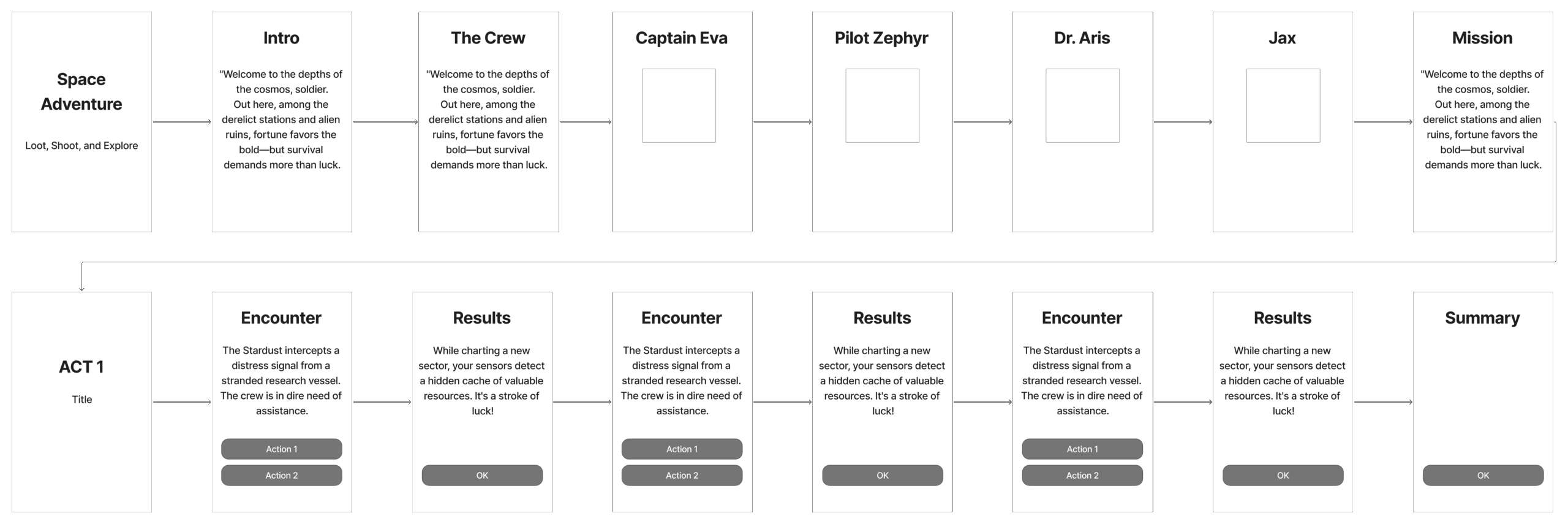
Strategic Pivot Towards Story Development
For the remainder of the month, I shifted focus toward developing the story and refining the user experience. This wasn’t just an aesthetic decision, it was a deliberate product prioritization call. Rather than expanding mechanics, I focused on emotional engagement and narrative flow, which early testers identified as the most compelling part of the game.
Development & Release
- Developed front-end in VSCode using vanilla JS/HTML/CSS
- Further leaned on Gemini and Cline to develop the structure of the game
- Integrated story continuity, character art, and sound design as suggested by ChatGPT
Assigning Roles and Responsibilities to LLMs
During development, I assigned less commonly used LLMs to specific roles. For example, using Copilot as my de facto art department. While more specialized tools might have produced higher-quality visuals, Copilot’s output was more than sufficient for a functional, testable MVP.
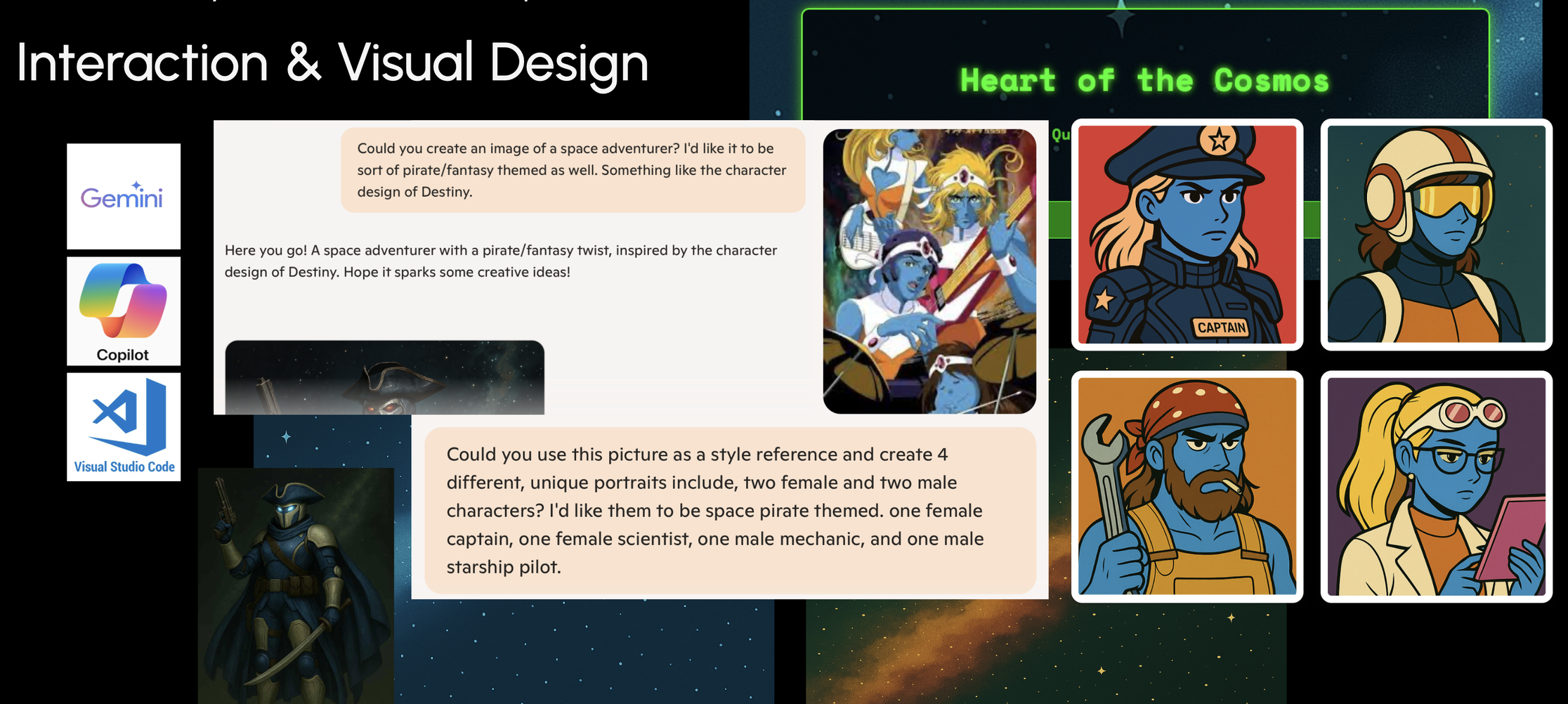
Revisited, How I Collaborated with LLMs:
- Perplexity as a Product Manager (PM) partner – breaking down scope, writing logic, discovery and research strategy
- Gemini as Technical Product Manager (TPM) – translating goals into technical requirements
- ChatGPT and Copilot as Design partners – brainstorming UI/UX, producing content that resonated with users
- DeepSeek and Cline as QA sounding boards – evaluating flows and testing conditions
Results and Successes
Though this was an MVP, I treated it like a real product: focusing on the core value proposition, defining success metrics, and identifying adjacent opportunities for future iteration.
Check out the demo below! It’s still being developed at the time this was written. Expect some UI errors and missing images.*
MVP Delivered: Live demo
- Functional prototype playable on mobile and desktop
- 3 complete acts of structured story with emergent consequences
- Strong early feedback: “short, punchy, emotional”
The second encounter in Act 1 had me and my friends seriously questioning each other’s morals. It was fun to argue about what was best for the crew and then immediately regret the decision we made.
Product Outcomes:
- Validated the core loop: collaborative tension, resource tradeoffs, and shared storytelling
- Demonstrated feasibility of future genre variants (fantasy, crime, eLearning modules)
- Positioned game engine for reuse and expansion




The group decision-making adds so much tension. Each choice felt important, and the consequences really made us think.
Reflection & PM Takeaways
This was a valuable opportunity to apply core product management skills to build a proof of concept and to deliver a nearly complete product that could generate early user insight. It also sharpened my leadership in a novel context: aligning a team of AI collaborators under a unified product vision and iterating toward a cohesive, high-impact outcome.
Product Ownership
- Led end-to-end delivery across strategy, design, development, and testing
- Practiced prioritization under constraints, scoping what was essential for emotional resonance and learning
Decision-Making & Communication
- Used LLMs not just as tools, but as collaborative thinking partners
- Learned to frame clear prompts and articulate ambiguous ideas, sharpening my clarity as a PM
Iterative Mindset
- Embraced experimentation, delivering fast, learning faster
- Applied test-and-learn cycles even without large datasets
Next Steps
🟢 Refinement
- Polish UX/UI for broader playtesting
- Add metrics tracking to validate player engagement, decision flow, and drop-off points
🟡 New Product Experiments
- Test the game framework in new genres (e.g., mystery, eLearning simulations)
🔴 Go-to-Market Planning
- Explore branding and monetization models
- Begin community building on Steam, Reddit, and Discord
This project wasn’t just a game—it was a product. I approached it like any digital product: with a clear user need, lean MVP scope, structured problem-solving, and measurable learning.
It honed my ability to:
- Lead across functions, even when I’m the one wearing every hat
- Use AI as a strategic asset in product development
- Deliver value early, learn fast, and build forward


